Earlier this year, I decided to leave my full-time design job to pursue my dream of creating an alternative design school. And guess what?! My first learning experience: The Art of Visual Design (Elizabeth’s Version) is launching on November 8th.
(If you’re reading this on the published date, it’s launching tomorrow!)
.jpeg)
Before it’s released to the world, I want to share how The Art of Visual Design (Elizabeth's Version) represents a culmination of my years of learning design, teaching design, and designing for learning.
Learnings from Lalizlabeth Graphix

I recently tried browsing Facebook, hoping to find a glimpse of one of my first designs for ⭐ Lalizlabeth Graphix ⭐, my Neopets design agency. But instead, while scrolling through my Facebook profile, I came across a “25 facts about me” listicle. Here's fact #20:
When I "grow up"... I want to do something with design or computers... {but that doesn't involve math... I'm not sure if that's possible or not}. But I do think that it would be really cool to design rides at like Universal Studios... not that math and science part, but the "look". (Me, at age 14)
😇 It's kinda wild how I am doing exactly that: "something with design and computers."
One of my goals for The Art of Visual Design was to bring back the high personalization and chaos of the 2000s era of the internet that I originally fell in love with. In a recent live community event, we explored a series of prompts that encouraged a playful mindset and challenged notions of industry good taste. For instance, what would happen if you used five different hues to style a body of text?

Or how might you create a type hierarchy using four different typefaces instead of sticking with one?

Unlike other online design courses, discovering your personal aesthetic is core to the course. Each project is designed to help students explore and develop their individual style. 🤩 Take a look at the diverse range of styles showcased in the first project:
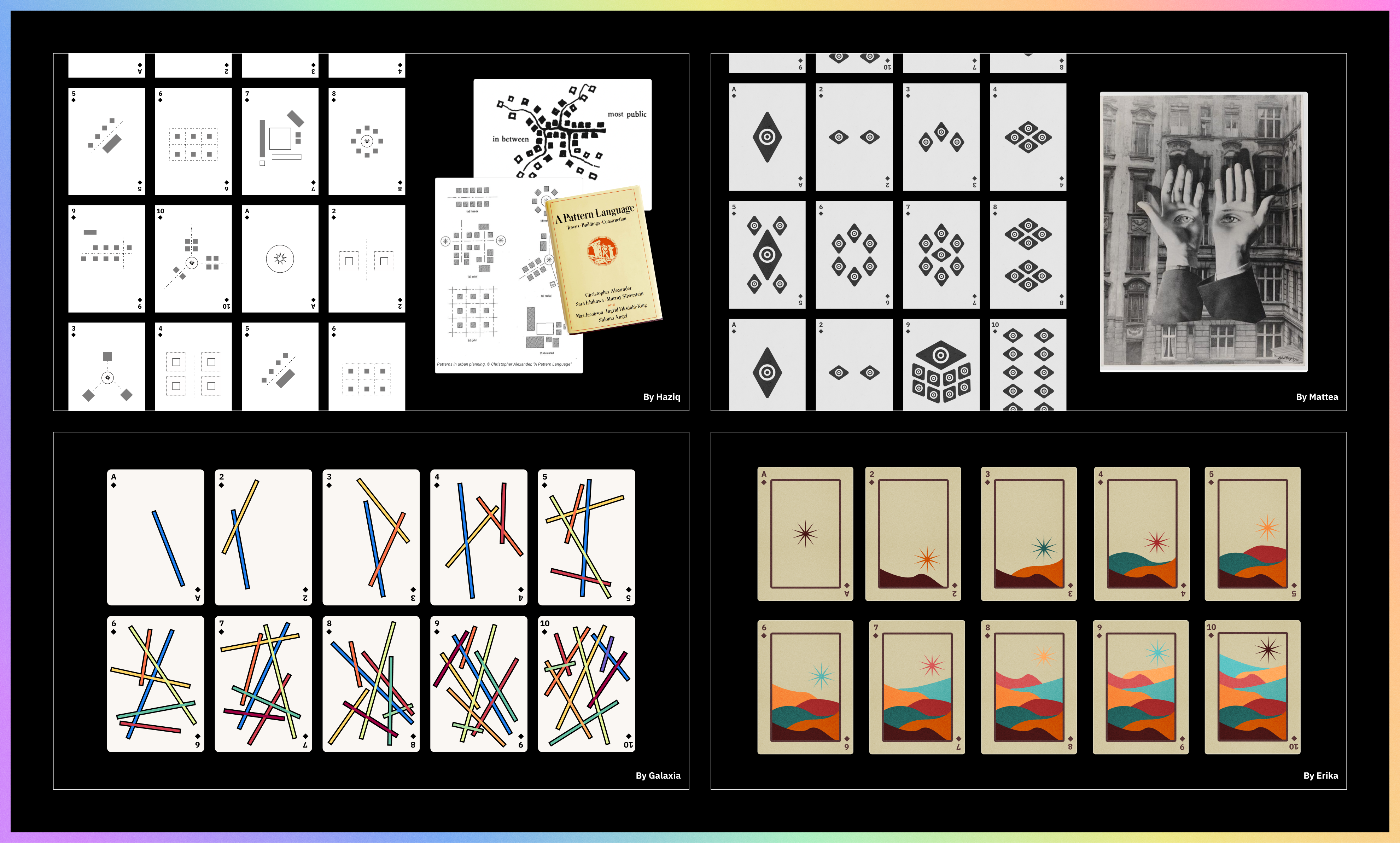
Learnings from student-led communities
When it was time for college, I decided to focus on the “computer” side of things. I thought I wanted to do “computer graphics" until I discovered that it involves a lot of math 🥺. Studying computer science was fun, but I quickly realized I was most interested in the “design” side of things.
At the time, Cal did not offer an official design program. Fortunately, I discovered a community of design-loving students on campus who were passionate about teaching and learning from each other. When I was a student, I made this graphic to highlight the size of Cal’s design ecosystem. I pulled it from the vault just for you. I credit most of my design education to this diverse network of the students, teachers, and spaces.

Being a member of Cal's design ecosystem has greatly influenced my approach to community in The Art of Visual Design. I often reference this quote from “Teaching Critical Thinking” by bell hooks:
“When everyone in the classroom, teachers and students, recognizes that they are responsible for creating a learning community together, learning is at its most meaningful and useful.”
The live community events are not called “classes” for a reason. I intentionally design activities and experiences to keep everyone engaged and active. 👀 Look at all the little Figma cursors exploring a layout system together, live.

Learnings from Adobe Illustrator CS4
During my sophomore year, I taught my first course titled “Intro to Illustrator & Photoshop”. I remember spending the majority of my winter break flipping through this giant textbook "The Illustrator Bible” to prep for the course.

Teaching this class taught me a lot of things like how Cmd-Shift-I is the shortcut for getting rid of the “scary grid that just appeared on my screen.”

Most importantly, I discovered one of my fundamental design education principles: understanding the tool is just as important as understanding the theory. I noticed that the more comfortable students were with Illustrator, the more they could make their dreams become a reality. The tool should never be a blocker for creating your ideas.
That’s why The Art of Visual Design also teaches the design tool: Figma. I made an effort to make the Figma parts exciting for more senior designers too by encouraging students to “speed run” their way through. Here’s a peek at one of my favorite lessons on the Pen and Pencil Tools:
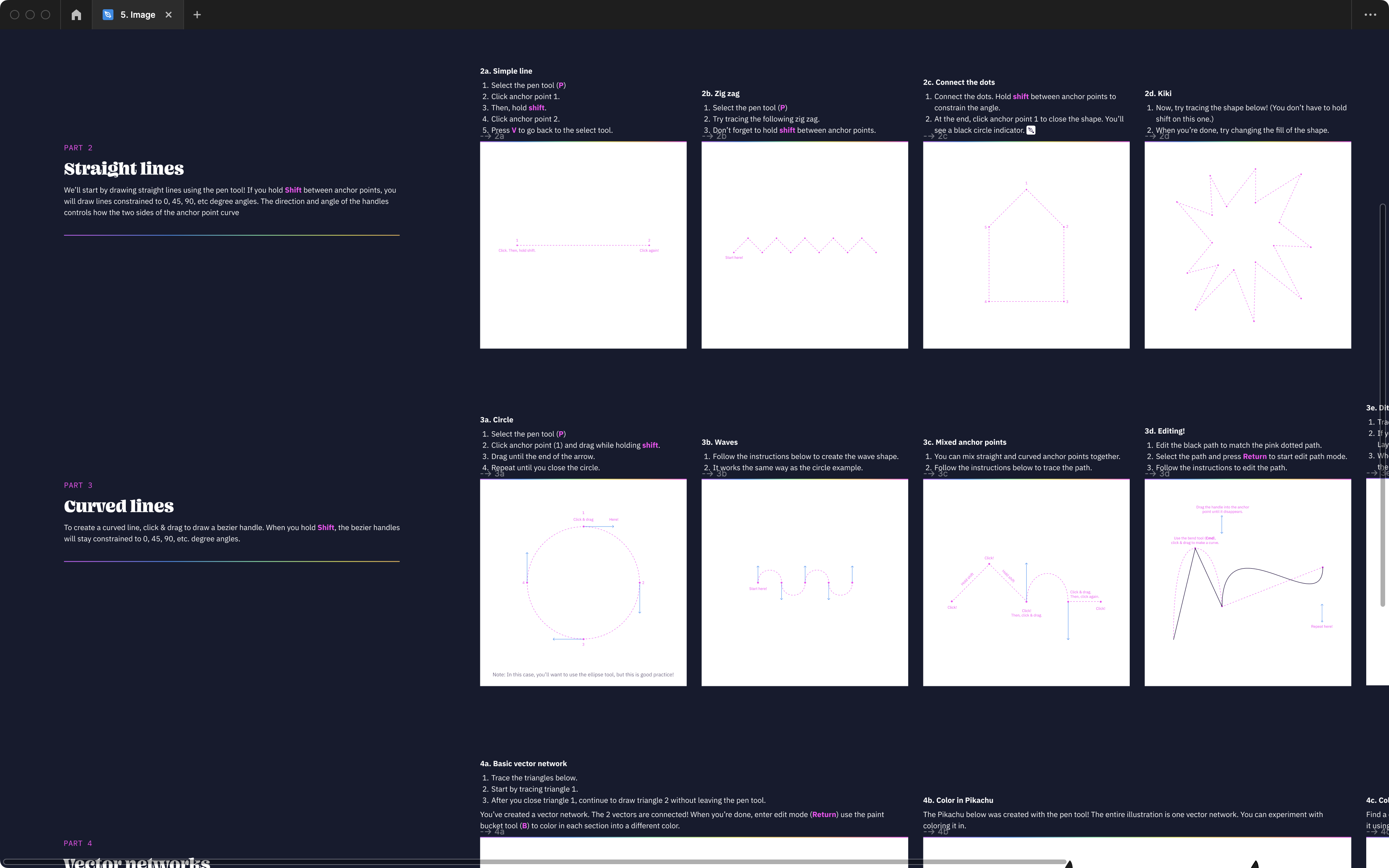
I also myself referencing my own Illustrator Pen Tool notes from 2013 to make this lesson 😇.
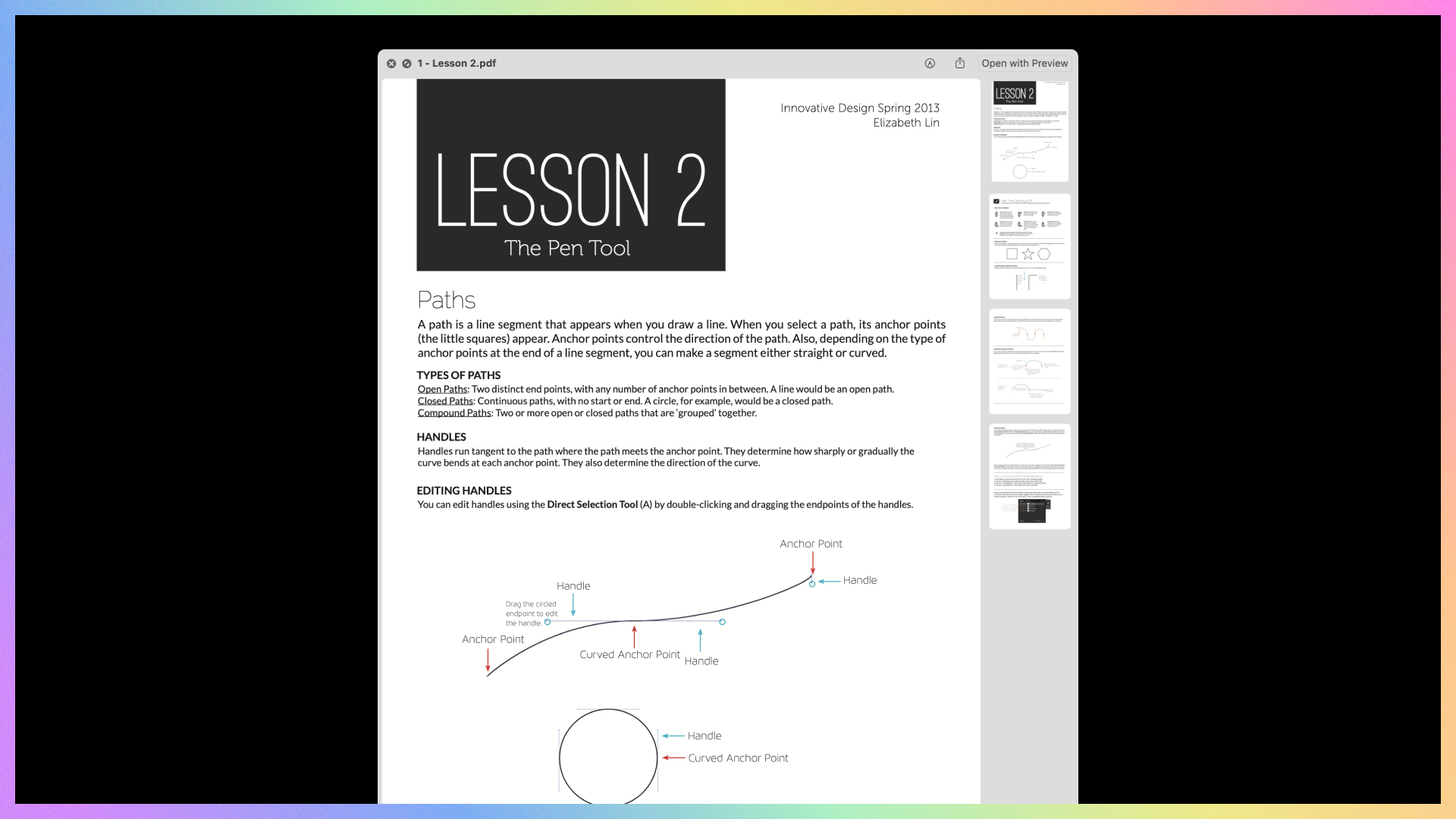
Learnings from designing for learning
After I graduated, I worked as a product designer at Khan Academy. I learned about the U.S. education system (I’ll save my rant for another day) and designed things for both teachers and students. One of my major projects involved creating tools for teachers to track their students' progress.
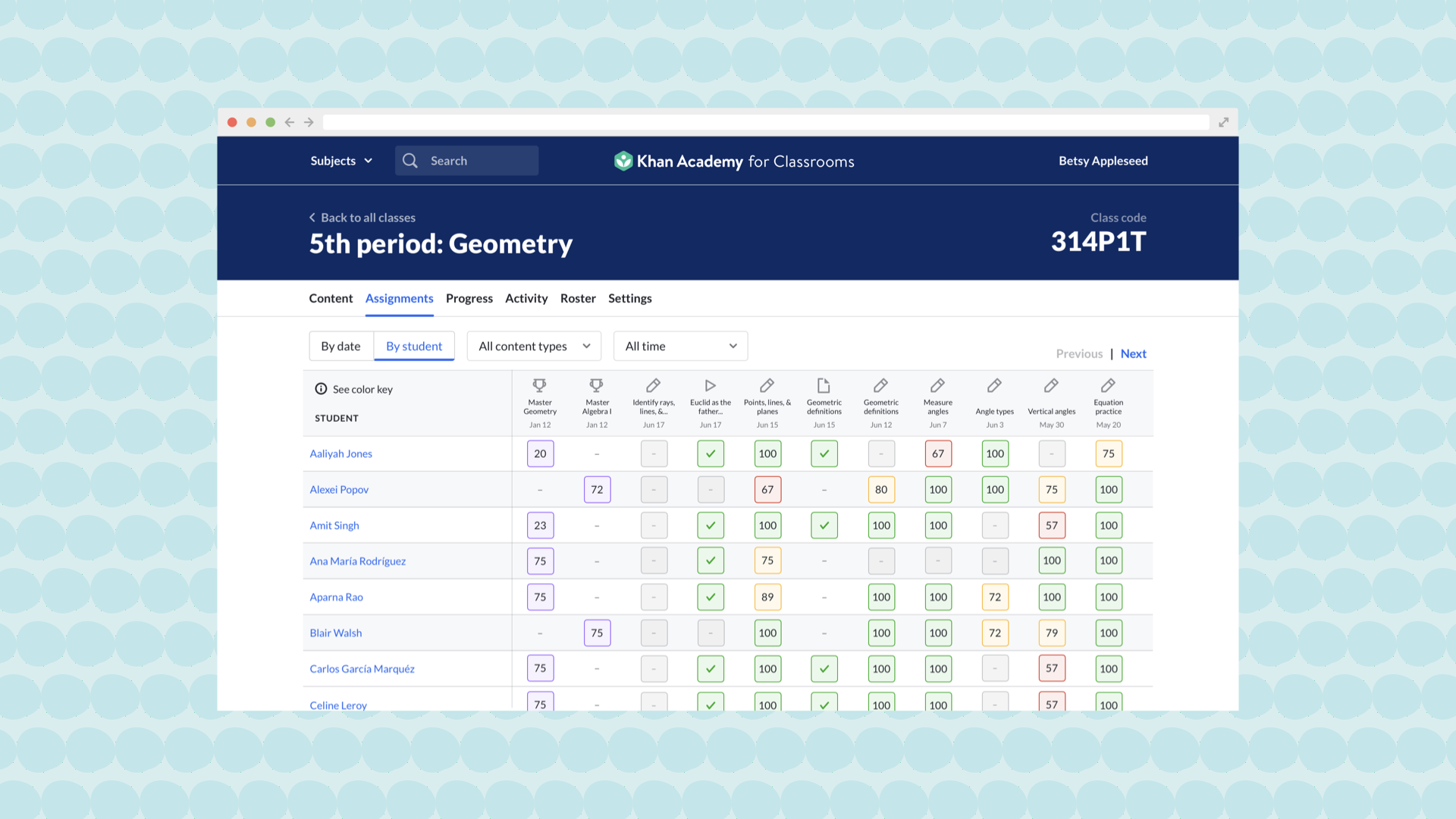
Using similar principles, I built a dashboard for myself using Notion 🤭.
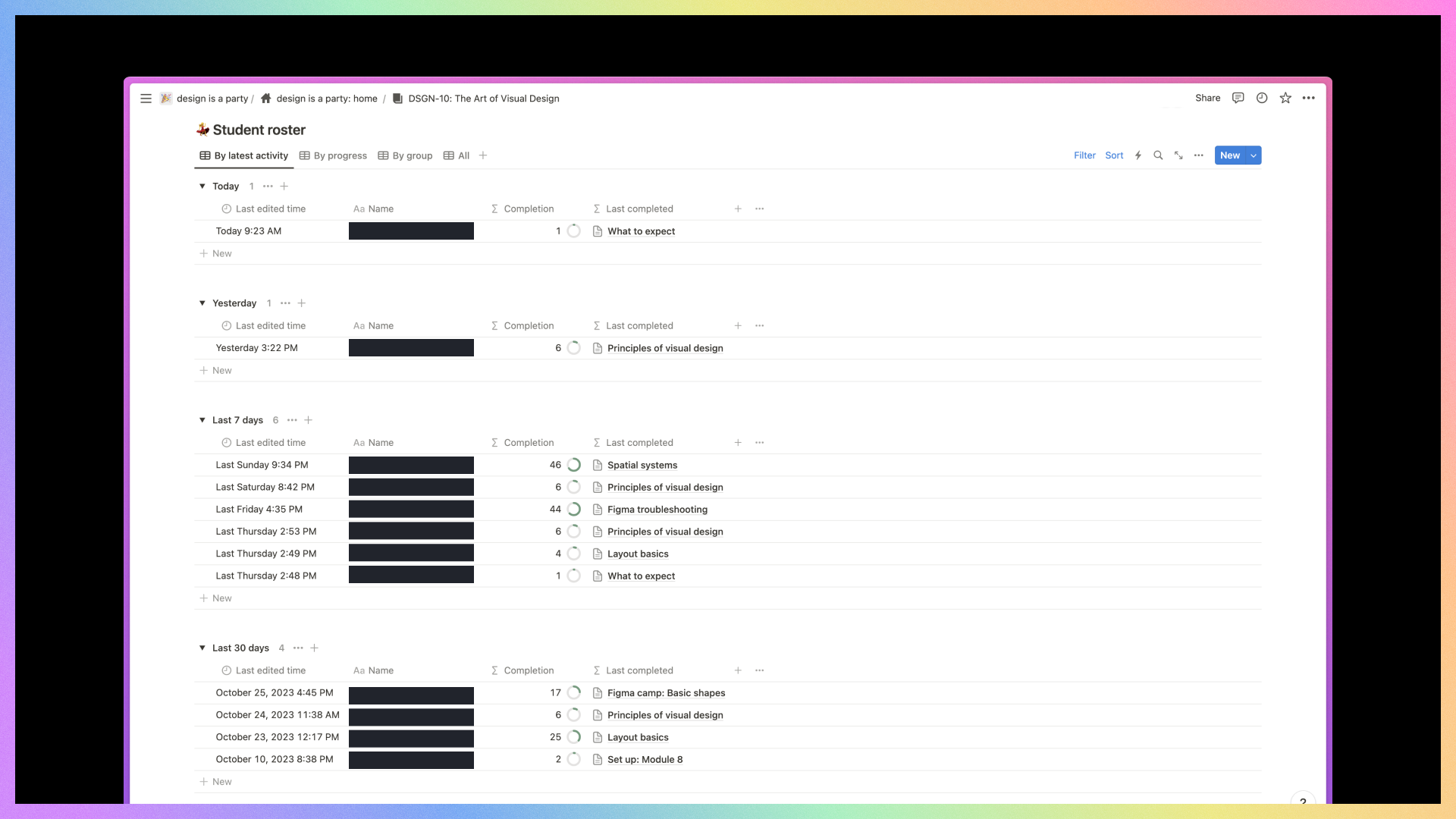
And… now that I’m working for myself, I can also introduce little features that would normally take ages to get approved. For example, you can see how far everyone is in the course with these little bubbles.
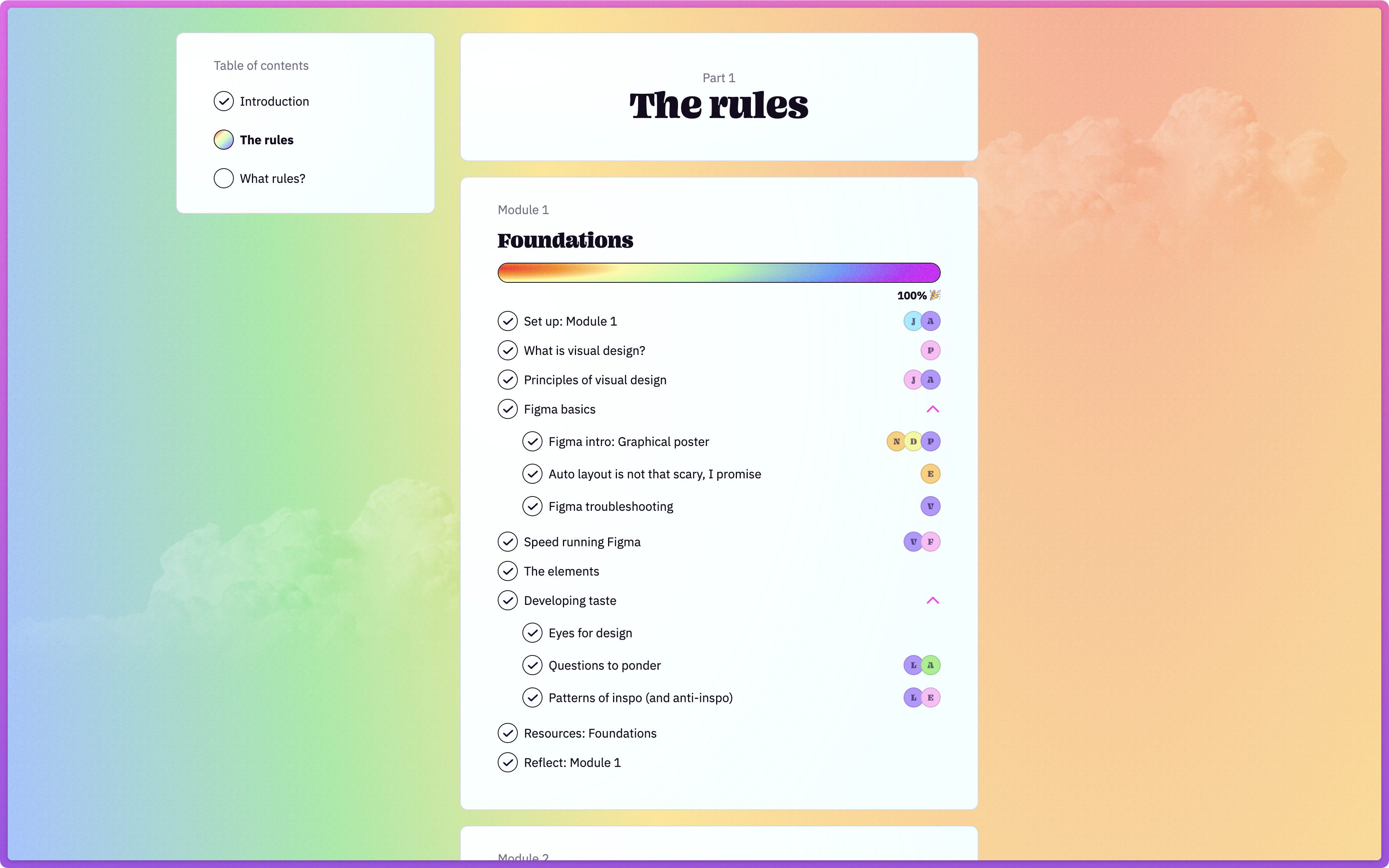
Learnings from teaching at scale
I’ve written quite a bit about my time at Lambda School (now BloomTech) leading the experiential learning program for aspiring UX designers specifically about developing scalable feedback systems and creating learning playgrounds.

During my time there, I discovered that the most challenging aspect to teach was explaining the reasoning behind your design choices. I wanted to incorporate the principle of "always explain why" into my course as early as possible. Instead of making it a standalone lesson or module, I integrated it as an underlying principle in every lesson, video, and activity.
To support this principle, each activity and project includes a set of guiding questions! Students are also encouraged to provide a description of their reasoning when sharing their work in Discord.
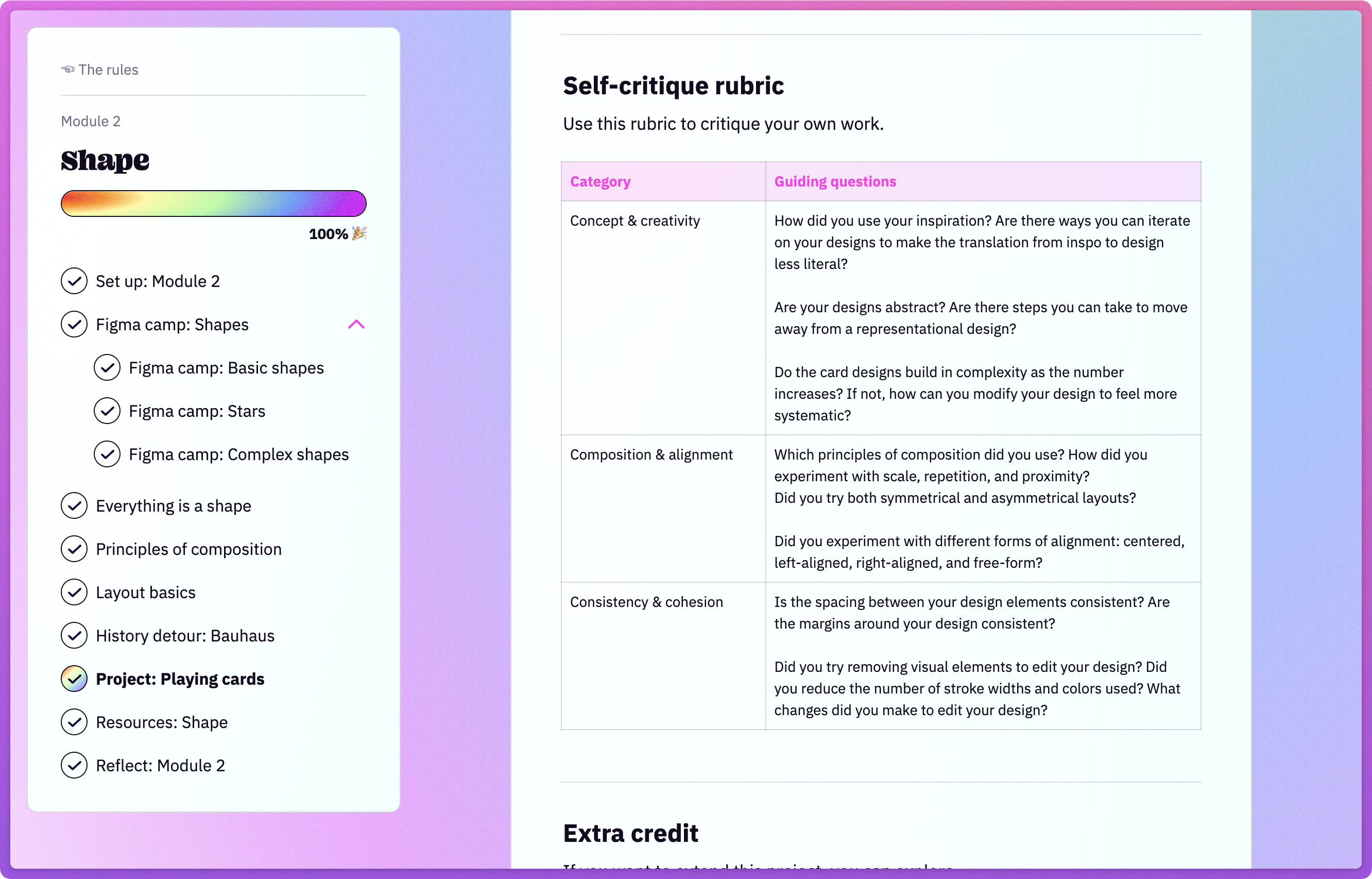
Learnings from working for myself
When I began this journey in March 2023, I started writing a weekly reflection called my “investor update” to share with my partner Varun. In each update, I reflect on what I did, what I learned, and what’s next. Someday, when I’m not frantically preparing for launch, I might release these to the world.

I’m really proud of how far I’ve come 🥺 and hope you enjoy it! The Art of Visual Design (Elizabeth’s Version) will be live on November 8th and I hope you check it out 💖
